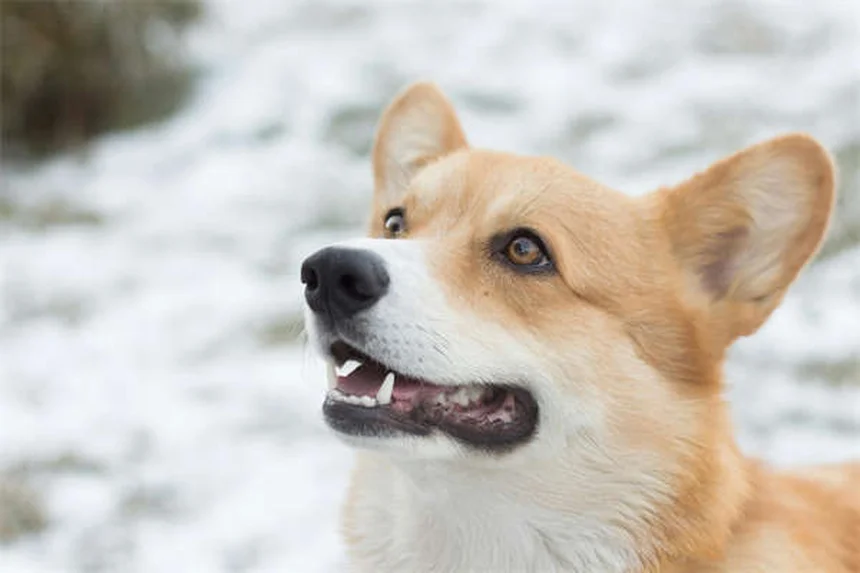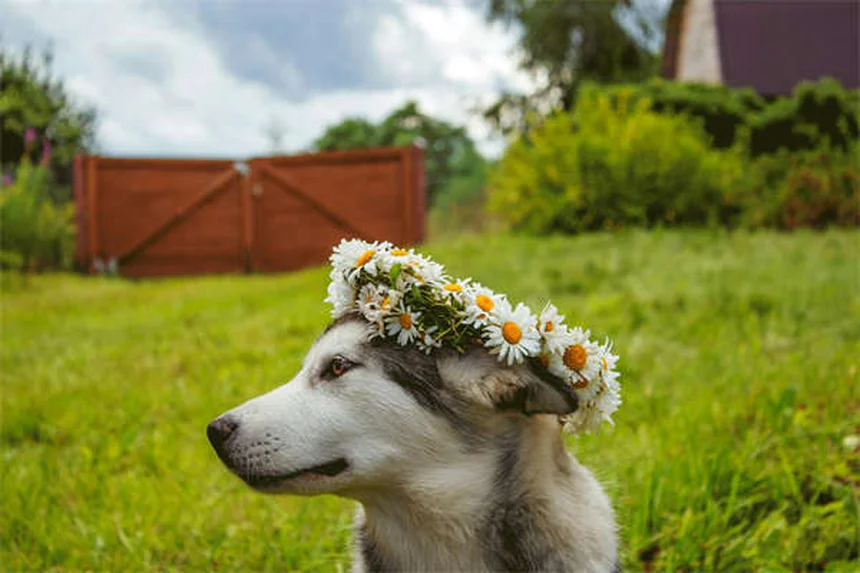Wondering about your dog's eye discharge? Here's the deal: some eye goop is totally normal, while other types signal it's time to call the vet. I've been through this with my own dogs countless times, and I'm breaking it down so you'll know exactly what to look for.The truth is, dog eye discharge comes in 5 main types - from harmless morning crust to serious infection signs. Yellow or green discharge? That's your cue to visit the vet ASAP. But those little sleepies in the corner? Probably nothing to worry about. Let me walk you through each type so you can keep your pup's peepers healthy and happy!
E.g. :Fluconazole for Dogs: What Pet Owners Need to Know About This Antifungal
- 1、Understanding Your Dog's Eye Discharge: A Complete Guide
- 2、Watery Eyes: When the Tears Won't Stop
- 3、Those Pesky Tear Stains
- 4、The Scary White-Gray Mucus
- 5、The Dreaded Yellow or Green Discharge
- 6、Your Top Eye Discharge Questions Answered
- 7、Beyond the Basics: More About Dog Eye Health
- 8、Understanding Breed-Specific Eye Concerns
- 9、When to Really Worry About Eye Discharge
- 10、Fun Facts About Dog Eyes You'll Love
- 11、Creating a Healthy Eye Care Routine
- 12、FAQs
Understanding Your Dog's Eye Discharge: A Complete Guide
Hey there fellow dog lover! Let's talk about something we've all seen but rarely discuss - those mysterious eye boogers our pups get. Eye discharge in dogs can range from completely normal to "vet visit ASAP" situations. I'll walk you through the five main types so you'll know exactly when to grab the warm washcloth and when to call the vet.
The Morning Eye Booger Situation
You know those little crusties your dog gets in the corners of their eyes after sleeping? That's usually normal! Just like us, dogs produce tears that contain mucus, oil, and other stuff that can dry overnight.
Here's what's happening: your dog's tears work hard all day keeping their eyes clean and nourished. At night, when they're not blinking as much, some of this tear mixture collects in the corners and dries. It's typically clear or slightly reddish-brown. My Labrador Max gets these every morning - I call them his "eye cookies."
When Normal Goop Turns Problematic
While morning eye crust is usually fine, you should watch for these warning signs:
| Normal | Concerning |
|---|---|
| Clear or light brown | Yellow or green color |
| Small amount | Increasing quantity |
| Easy to wipe away | Sticky or hard to remove |
Did you know some breeds are more prone to eye discharge? Pugs, Bulldogs, and other flat-faced dogs often have more eye goop because of their facial structure. Their adorable squished faces mean tears can't drain as easily.
Watery Eyes: When the Tears Won't Stop
 Photos provided by pixabay
Photos provided by pixabay
The Allergy Connection
Ever notice your dog's eyes watering more during pollen season? Just like humans, dogs can get seasonal allergies! Their eyes might water excessively when they're reacting to pollen, dust, or other irritants.
I remember when my neighbor's Golden Retriever, Buddy, started having watery eyes last spring. Turns out he was allergic to the oak pollen that covered our yards. A simple antihistamine from the vet solved the problem. But here's the thing - not all watery eyes are allergy-related.
Serious Causes of Watery Eyes
While allergies are common, excessive tearing can also signal:
- Scratches on the eye surface
- Glaucoma (increased eye pressure)
- Blocked tear ducts
- Eyelid abnormalities
Pro tip: If your dog's watery eyes persist more than a day or two, or if you notice redness or discomfort, it's vet time. Better safe than sorry when it comes to those precious peepers!
Those Pesky Tear Stains
Why White Dogs Get Reddish Stains
Have you ever wondered why light-colored dogs often have those reddish-brown streaks under their eyes? It's all about porphyrins - pigments found in tears that turn reddish-brown when exposed to air.
My friend's Maltese, Snowball, had this issue bad. We tried everything from special wipes to changing her diet. Here's what actually worked:
- Daily gentle cleaning with vet-approved eye wipes
- Keeping the hair around her eyes trimmed short
- Adding filtered water to her diet (turns out our tap water had minerals that made it worse)
 Photos provided by pixabay
Photos provided by pixabay
The Allergy Connection
While usually just cosmetic, tear stains can sometimes indicate:
Did you know that sudden changes in tear stain color or amount could mean an eye infection? That's right - if your dog's normal light stains suddenly become dark and copious, it's worth a vet check.
Here's a funny story: One client thought her dog's tear stains were getting worse, but it turned out the pup had discovered how to open the pantry and was sneaking beet chips! Always rule out dietary causes first.
The Scary White-Gray Mucus
Dry Eye Disease Explained
When dogs produce thick white or gray mucus, it's often keratoconjunctivitis sicca (fancy vet term for dry eye). This happens when the immune system attacks tear-producing glands.
Imagine your eyes feeling like they're full of sand - that's what dry eye feels like for dogs. The body tries to compensate by making more mucus, but it's a poor substitute for real tears. Left untreated, this can lead to serious pain and even blindness.
Treatment Options That Work
The good news? Most dogs respond well to treatment. Options include:
- Immunosuppressive eye drops (like cyclosporine)
- Artificial tears
- In severe cases, surgical options
I've seen dogs go from miserable to happy with proper treatment. One Cocker Spaniel patient went from keeping his eyes shut all the time to playing fetch again after just two weeks on medication!
The Dreaded Yellow or Green Discharge
 Photos provided by pixabay
Photos provided by pixabay
The Allergy Connection
If you see yellow or green gunk in your dog's eyes, it's probably an infection. This discharge often comes with redness, squinting, and pawing at the eyes.
Remember my earlier story about Max? Well, one time his normal morning eye boogers turned yellow and goopy. Turns out he had conjunctivitis from rolling in something gross at the dog park. A week of antibiotic eye drops cleared it right up!
Why You Shouldn't Wait
Eye infections can go from bad to worse quickly. Some can even indicate systemic illnesses. That's why we recommend immediate vet attention for:
- Thick yellow/green discharge
- Excessive blinking or squinting
- Redness or swelling
- Light sensitivity
Your Top Eye Discharge Questions Answered
How Can I Clean My Dog's Eyes Safely?
Use a soft, damp cloth (no soap!) or vet-approved eye wipes. Always wipe from the inner corner outward. And please - no Q-tips near those eyeballs!
Here's a trick I teach all my clients: Make eye cleaning part of your daily cuddle routine. That way your dog associates it with love and treats, not stress.
Can Human Eye Drops Help My Dog?
This is a big NO. Many human eye products contain ingredients that can harm dogs. Always use vet-prescribed medications.
Fun fact: The pH of dog tears is different from human tears. That's why our eye drops don't work well for them - it's like putting the wrong fuel in your car!
Preventing Future Eye Problems
Regular grooming (especially for long-haired breeds), annual vet checks, and watching for changes can keep your dog's eyes healthy. And remember - when in doubt, check it out!
Now go give your pup some extra ear scratches from me. And maybe keep an eye out for those morning eye cookies - they're usually nothing to worry about, but now you know exactly when to call the vet!
Beyond the Basics: More About Dog Eye Health
The Surprising Link Between Diet and Eye Discharge
You might not realize this, but what your dog eats can directly affect their eye health. Low-quality dog foods often contain fillers and additives that can increase tear production and lead to more discharge. I've seen cases where simply switching to a higher quality food reduced tear stains by 50% in just a few weeks!
Let me tell you about Bella, a Shih Tzu who came to me with chronic eye issues. Her owner was using expensive eye wipes daily, but the problem persisted. After reviewing Bella's diet, we discovered she was allergic to chicken - a common ingredient in many dog foods. Switching to a salmon-based formula not only cleared up her skin issues but significantly reduced her eye discharge too. Sometimes the solution isn't what you put on the eyes, but what you put in the bowl!
Environmental Factors You Might Be Overlooking
Did you know your home environment could be irritating your dog's eyes? Here are some often-missed culprits:
- Air fresheners and scented candles
- Dust from air vents
- Chemical cleaners used on floors
- Secondhand smoke
I'll never forget the case of Rocky, a Boxer whose eyes were constantly watering. His owner tried everything until we discovered the issue - the plug-in air freshener right next to Rocky's bed! Removing it made an immediate difference. Our homes are full of potential eye irritants we don't even think about.
Understanding Breed-Specific Eye Concerns
Why Some Breeds Need Extra Eye Care
Certain dog breeds are practically walking eye issue magnets. We're talking about breeds like:
| Breed | Common Eye Issues | Special Care Needed |
|---|---|---|
| Pekingese | Corneal ulcers, dry eye | Daily cleaning, humidifier |
| Bloodhound | Ectropion (droopy eyelids) | Regular vet checks |
| Cocker Spaniel | Cherry eye, glaucoma | Possible surgery |
If you own one of these breeds, don't panic! With proper care, they can have perfectly healthy eyes. My advice? Start a preventative care routine early - it's much easier than treating problems later.
The Truth About "Cherry Eye"
Ever seen a dog with a red, swollen mass in the corner of their eye? That's called cherry eye, and it's more common than you think. Here's what most people don't know - it's not actually the eyeball that's swollen, but the third eyelid's gland.
I remember treating a young Bulldog named Tank who developed cherry eye. His owner thought it would go away on its own, but these cases rarely do. We caught it early and were able to surgically reposition the gland before any permanent damage occurred. The key is acting fast - waiting can lead to chronic dry eye.
When to Really Worry About Eye Discharge
The Hidden Dangers of Ignoring Eye Issues
Here's a scary thought - what if that little bit of eye gunk is actually a sign of something serious? While most eye discharge is harmless, sometimes it can indicate:
- Distemper (especially in puppies)
- Corneal ulcers
- Tumors
- Autoimmune diseases
Just last month, a client brought in their senior Labrador for "a little eye discharge." Turns out it was early-stage glaucoma that we caught just in time to save her vision. This is why I always say - when in doubt, get it checked out!
The One Symptom You Should Never Ignore
If your dog shows this sign along with eye discharge, head straight to the vet: sudden blindness or vision changes. I can't stress this enough - vision problems can develop scarily fast in dogs.
Remember my earlier question about when to really worry? Here's your answer: When the discharge is accompanied by behavioral changes like bumping into furniture or reluctance to go down stairs. These could signal serious neurological or vision issues that need immediate attention.
Fun Facts About Dog Eyes You'll Love
Why Dogs' Eyes Glow in Photos
Ever wonder why your dog's eyes glow in flash photography? It's all thanks to the tapetum lucidum, a special reflective layer behind their retina that helps them see better in low light. This amazing adaptation is why dogs can see so well at dusk when we're fumbling for light switches!
Here's a cool experiment to try: Take photos of different colored dogs at night. You'll notice their eye colors vary - typically greenish-yellow for most dogs, but blue in some breeds like Huskies. My Golden Retriever's eyes glow an eerie green that always makes me laugh in photos!
How Dogs See the World Differently
You might be surprised to learn that dogs don't see colors the way we do. While they're not completely colorblind, their world is mostly shades of:
- Blue
- Yellow
- Gray
That bright red toy you bought? To your dog, it probably looks dark yellowish-brown. This explains why so many dogs go crazy for blue balls - they can actually see them clearly! Next time you're toy shopping, keep this in mind. I always recommend blue or yellow toys to my clients for this exact reason.
Creating a Healthy Eye Care Routine
Daily Habits for Happier Eyes
Want to keep your dog's eyes sparkling and healthy? Try incorporating these simple habits:
- Morning eye check while giving breakfast
- Weekly gentle cleaning with vet-approved wipes
- Regular hair trimming around eyes (for long-haired breeds)
- Annual vet eye exams
I've been doing this with my own dogs for years, and let me tell you - it makes a huge difference. It takes less than a minute each day, but can help you catch potential issues early. Plus, most dogs love the extra attention!
The Right Way to Apply Eye Medications
If your vet prescribes eye drops or ointment, here's a pro tip: warm the medication in your hand for a minute first. Cold drops can startle your dog and make treatment harder.
I teach all my clients the "hug method" - gently hold your dog's head against your chest with one hand while applying medication with the other. It's less stressful than trying to hold them down, and most dogs tolerate it much better. Remember - praise and treats afterward make the whole experience more positive!
E.g. :5 Types of Dog Eye Discharge and When To Go to the Vet | PetMD
FAQs
Q: How can I tell if my dog's eye discharge is serious?
A: Watch for these red flags: If the discharge is yellow or green, thick like mucus, or accompanied by redness or pawing at the eyes, it's vet time. My rule of thumb? Normal "sleepies" are clear or light brown, easy to wipe away, and don't bother your dog. Anything that changes suddenly in color, amount, or consistency deserves a professional look. Remember Max's story? His normal eye boogers turned yellow overnight - that's exactly when I knew we needed the vet.
Q: What's the best way to clean my dog's eye discharge?
A: Gentle is the name of the game! Use a soft, damp cloth (no soap!) or vet-approved eye wipes. Always wipe from the inner corner outward - never poke toward the eyeball. I've found making this part of our daily cuddle routine helps dogs tolerate it better. Pro tip: For tear stains on white dogs, try a 50/50 mix of distilled water and hydrogen peroxide (but keep it away from the actual eye!).
Q: Are some dog breeds more prone to eye problems?
A: Absolutely! Those adorable flat-faced breeds like Pugs and Bulldogs are eye discharge magnets. Their facial structure means tears can't drain properly. Cocker Spaniels often deal with dry eye, while Shih Tzus commonly have eyelash issues. If you've got one of these breeds, regular eye checks should be part of your routine. My neighbor's Bulldog needs his eye folds cleaned daily - it's just part of their special care needs.
Q: Can I use human eye drops for my dog's eye discharge?
A: Please don't! Many human eye products contain ingredients that can seriously harm dogs. Their tear pH is different from ours - it's like putting diesel in a gasoline engine. I've seen cases where well-meaning owners caused more problems with over-the-counter human meds. Always use vet-prescribed eye treatments. That said, artificial tears made specifically for dogs can sometimes help with mild irritation.
Q: How often should I check my dog's eyes?
A: Make it part of your daily bonding time! While you're petting your dog, quickly check for: unusual discharge, redness, cloudiness, or squinting. I do this during our evening cuddle session - it takes seconds and could catch problems early. Senior dogs need extra attention, as they're more prone to age-related eye issues. My 10-year-old Lab gets a thorough eye exam during his weekly brushing session.











